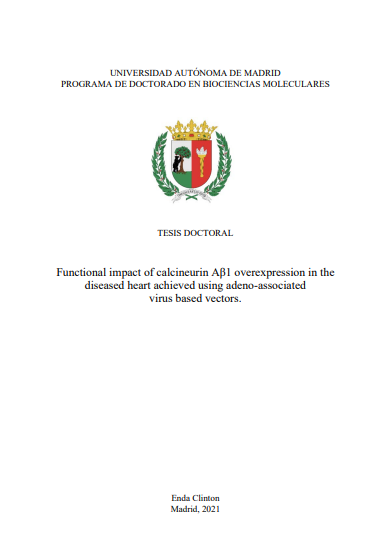Functional impact of calcineurin Aβ1 overexpression in the diseased heart achieved using adeno-associated virus based vectors
Licencia: Creative Commons (by-nc-nd)
Autor(es): Enda Clinton
In the adult heart, calcineurin activates the transcription factor NFAT, which leads to cardiac hypertrophy and eventually to heart failure. Alternative splicing of the calcineurin mRNA produces the CnAβ1 isoform, which has a unique C-terminal domain that activates AKT instead of NFAT. In mice, CnAβ1 overexpression in the heart as late as 1-week post-infarction results in improved cardiac function and reduced infarct size. To investigate its potential as a gene therapy, we developed an adeno-associated virus 9 (AAV9) vector in which CnAβ1 expression was controlled by the cardiac-specific cTnT promoter. Mice that received a systemic injection of AAV9-CnAβ1 showed cardiac specific expression of CnAβ1 up to 21 days post injection. In a mouse model of aortic stenosis in which pathological hypertrophy is induced by pressure overload, treatment with AAV9-CnAβ1 reduced cardiac hypertrophy, improved function and reduced adverse remodelling. Decreased expression of heart failure markers and fibrosis was also observed. We also tested the potential of AAV9-CnAβ1 administration in an ischemic reperfusion model of myocardial infarction. Systemic administration of AAV9-CnAβ1 resulted in decreased expression of heart failure markers, reduced adverse remodelling and improved function. These results highlight the potential of AAV9-CnAβ1 administration to overexpress CnAβ1 in various disease models and to achieve a therapeutic response in wild type animals.
[Madrid: 2021]
Compartir:
Una vez que el usuario haya visto al menos un documento, este fragmento será visible.


